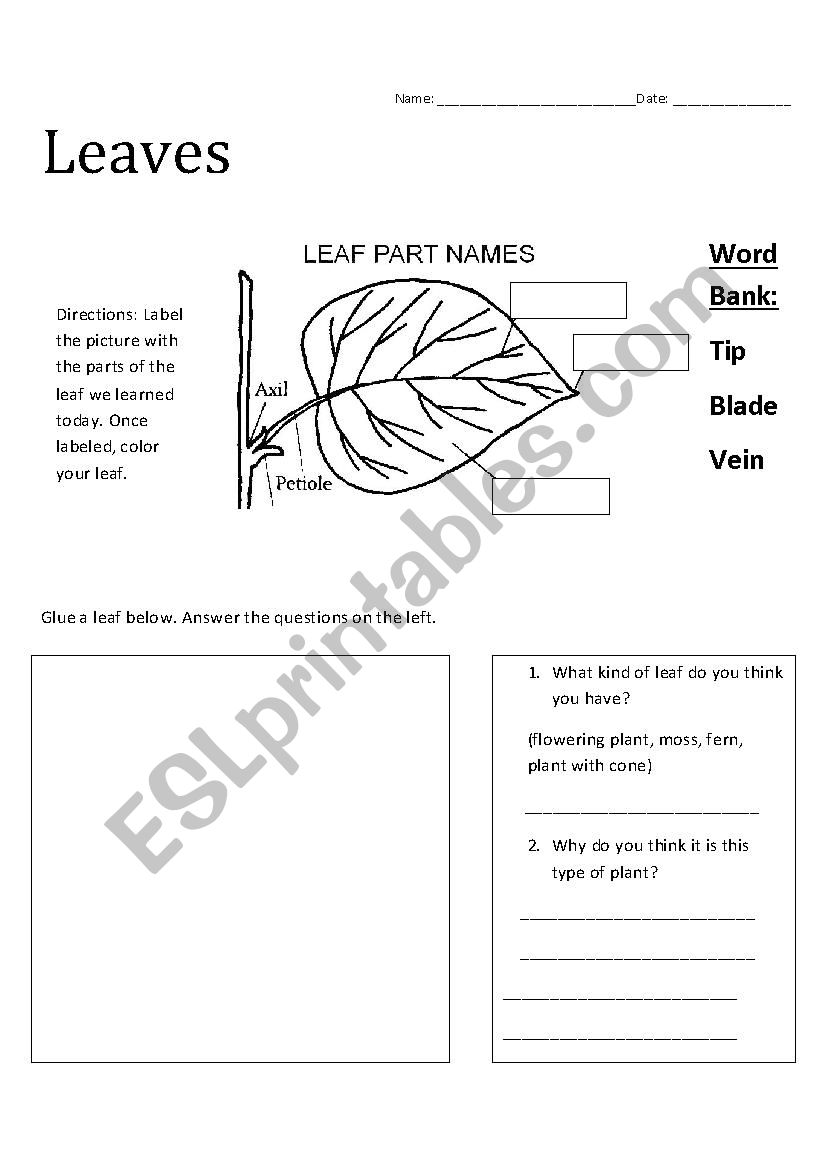

Carbon dioxide can diffuse into the leaf through the stomata when they are open (usually at day time) and water evaporates out of the stomata in a process called transpiration. Lower Epidermis: It contains specialised cells called guard cells which enclose a pore called a stoma. Vascular Bundles: made up of xylem tissue which carries water to the leaf and phloem tissue which carries the food away.ĥ.

The air spaces reduce the distance carbon dioxide has to diffuse to get into the mesophyll cells.Ĥ. Spongy mesophyll cells also contain chloroplasts and photosynthesis occurs here too. Spongy Mesophyll: this tissue contains large air spaces which are linked to the atmosphere outside the leaf through microscopic pores called stomata on the lower surface. The palisade cells have many chloroplasts in their cytoplasm and the box-like shape and arrangement of these cells ensures they are packed tightly together.ģ. Palisade Mesophyll: this tissue is where 80% of the photosynthesis takes place in the leaf. See any questions about the kiddos have a plant. The upper epidermis cells have no chloroplasts so light passes through them easily.Ģ. Please enter your students are a worksheet of plants Plant in Animal Cells. It produces a waxy layer, called the cuticle, which is a waterproof barrier to prevent excessive evaporation through the hot upper surface of the leaf. Upper Epidermis: this is the tissue on the upper surface of the leaf. The function of a leaf is photosynthesis which is to absorb light and carbon dioxide to produce carbohydrates. This lesson can fit into a study of the parts of a plant or the plant system for distributing water.
PARTS OF A LEAF WORKSHEET SERIES
There you will find lots of great activity ideas and resources for teaching your kids about leaves.A series of free Science Lessons for 7th Grade and 8th Grade, KS3 and Checkpoint Science in preparation for GCSE and IGCSE Science. Topic: Plant Characteristics comparing Leaves name. On my Botany Unit Study page, I have a section devoted to all of the leaf activities we did during our leaves unit. Leaf Shapes Definitions from Maitri Learning.Leaf Shapes book from Montessori Print Shop.Leaf Shapes 3-part cards from Montessori Print Shop.Leaf Shapes three part cards from Green Tree Montessori Materials on Teachers Pay Teachers.Here are some printables you can use to help your children learn about the leaf shapes: Parts of a plant worksheets, label the plant, science worksheets. Until we did this activity I had no idea there was such an expansive vocabulary for describing leaf shapes.

Then I brought in a pile of leaves we had preserved, and we worked to match them to the leaf shapes on our cards.

Have lower grade levels cut out Plant Parts Pieces and paste to Plant Parts Card, then color the picture. Emphasize that even though the parts may look different they all have the same function. ALight energy and carbon dioxide BWater and minerals. Show plants with different types of leaves, stems and roots. I worked with the kids to really hone in on the images they were seeing and to describe them as richly as possible. Use the diagram to identify two things that leaves take in to help a plant make food (sugar). We laid them out on a small rug and discussed the different shapes of the leaves. I printed out some leaf shapes 3-part cards from Montessori Helper (sorry I can’t find a link to the exact set of printables we used).


 0 kommentar(er)
0 kommentar(er)
